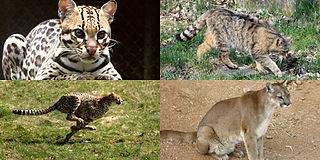
The lux is the unit of illuminance, or luminous flux per unit area, in the International System of Units (SI). It is equal to one lumen per square metre. In photometry, this is used as a measure of the intensity, as perceived by the human eye, of light that hits or passes through a surface. It is analogous to the radiometric unit watt per square metre, but with the power at each wavelength weighted according to the luminosity function, a model of human visual brightness perception, standardized by the CIE and ISO. In English, "lux" is used as both the singular and plural form. The word is derived from the Latin word for "light", lux.

Friedrich Wilhelm Joseph Schelling, later von Schelling, was a German philosopher. Standard histories of philosophy make him the midpoint in the development of German idealism, situating him between Johann Gottlieb Fichte, his mentor in his early years, and Georg Wilhelm Friedrich Hegel, his one-time university roommate, early friend, and later rival. Interpreting Schelling's philosophy is regarded as difficult because of its evolving nature.

Vegetation is an assemblage of plant species and the ground cover they provide. It is a general term, without specific reference to particular taxa, life forms, structure, spatial extent, or any other specific botanical or geographic characteristics. It is broader than the term flora which refers to species composition. Perhaps the closest synonym is plant community, but vegetation can, and often does, refer to a wider range of spatial scales than that term does, including scales as large as the global. Primeval redwood forests, coastal mangrove stands, sphagnum bogs, desert soil crusts, roadside weed patches, wheat fields, cultivated gardens and lawns; all are encompassed by the term vegetation.

The Austrian Empire, officially known as the Empire of Austria, was a multinational European great power from 1804 to 1867, created by proclamation out of the realms of the Habsburgs. During its existence, it was the third most populous monarchy in Europe after the Russian Empire and the United Kingdom, while geographically, it was the third-largest empire in Europe after the Russian Empire and the First French Empire.

Felinae is a subfamily of the Felidae and comprises the small cats having a bony hyoid, because of which they are able to purr but not roar. Other authors have proposed an alternative definition for this subfamily, as comprising only the living conical-toothed cat genera with two tribes, the Felini and Pantherini, and excluding the extinct sabre-toothed Machairodontinae.

Termatosaurus is a potentially dubious genus of archosaur known from several tooth specimens. Its remains come from the Upper Triassic of France, England, Germany and Switzerland. Termatosaurus was once thought to have survived until the Early Jurassic, but the attributed Jurassic remains were redescribed as plesiosaur material. Two species are known of this animal: the type species, T. albertii, named by Meyer and T. Plieninger in 1844, and T. crocodilinus, by Quenstedt (1858).

The Grand Duchy of Hesse and by Rhine was a grand duchy in western Germany that existed from 1806 to 1918. The grand duchy originally formed from the Landgraviate of Hesse-Darmstadt in 1806 as the Grand Duchy of Hesse. It assumed the name Hesse und bei Rhein in 1816 to distinguish itself from the Electorate of Hesse, which had formed from the neighbouring Landgraviate of Hesse-Kassel. Colloquially, the grand duchy continued to be known by its former name of Hesse-Darmstadt.

Atolla wyvillei, also known as the Atolla jellyfish, Coronate medusa, and deep-sea jellyfish, is a species of deep-sea crown jellyfish. It lives in oceans around the world. Like many species of mid-water animals, it is deep red in color. This species was named in honor of Sir Charles Wyville Thomson, chief scientist on the Challenger expedition.

Atolla is a genus of crown jellyfish in the order Coronatae. The genus Atolla was originally proposed by Haeckel in 1880 and elevated to the monotypic family level, as Atollidae by Henry Bigelow in 1913. The six known species inhabit the mesopelagic zone. The medusae possess multiple lobes called lappets at the bell margin. Medusae also have eight tentacles, alternating with eight rhopalia, and twice as many lappets occur as tentacles.

The kelvin, symbol K, is the base unit for temperature in the International System of Units (SI). The Kelvin scale is an absolute temperature scale that starts at the lowest possible temperature, taken to be 0 K. By definition, the Celsius scale and the Kelvin scale have the exact same magnitude; that is, a rise of 1 K is equal to a rise of 1 °C and vice versa, and any temperature in degrees Celsius can be converted to kelvin by adding 273.15.
Teuthonista is a phonetic transcription system used predominantly for the transcription of (High) German dialects. It is very similar to other Central European transcription systems from the early 20th century. The base characters are mostly based on the Latin alphabet, which can be modified by various diacritics.

Atolla chuni is a species of crown jellyfish within the family Atollidae. The species is found distributed in the Southern Ocean and some parts of the southern Pacific and Atlantic Ocean in pelagic environments at depths of up to 5198 meters. Individuals have been found with partially digesting remains of large Calanoida copepods, chaetognaths, Hyperiidea amphipods, and krill attached to the gastric cirri. It grows to a length of 7 centimeters.
Atolla parva is a species of true jellyfish in the family Atollidae. It is found in the north Atlantic Ocean and in waters around New Zealand.
Atolla reynoldsi is a species of true jellyfish in the family Atollidae. It is known from type specimens found in the north Pacific Ocean.
Atolla vanhoeffeni is a species of true jellyfish in the family Atollidae.

Atolla gigantea is a species of true jellyfish in the family Atollidae. It is known from type specimens found in the north Pacific Ocean.

Atolla valdiviae is a species of true jellyfish in the family Atollidae. It is known from type specimens found in the north Pacific Ocean.
Atolla verrillii is a species of true jellyfish in the family Atollidae. It is known from type specimens found in the north Pacific Ocean.
Atolla clara is a species of true jellyfish in the family Atollidae. It is known from type specimens found in the north Pacific Ocean.











